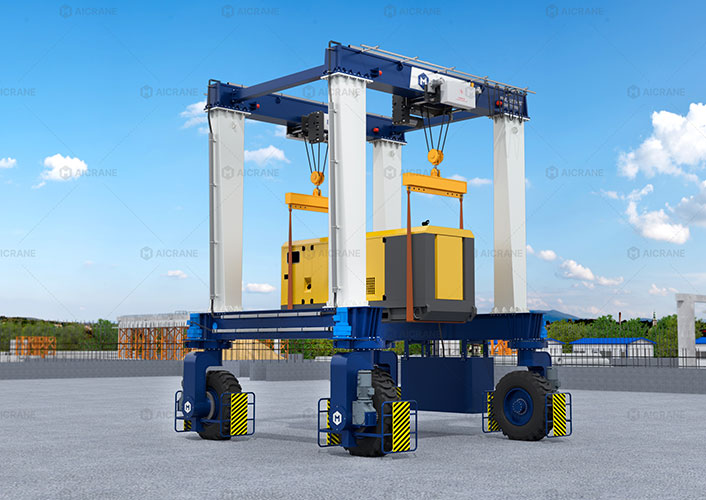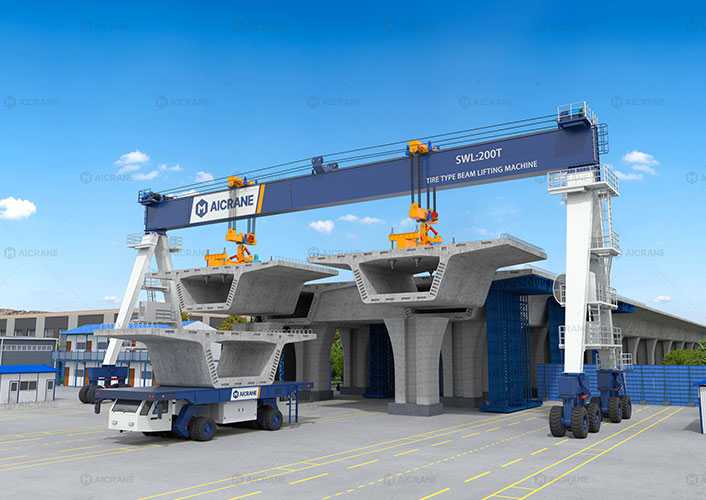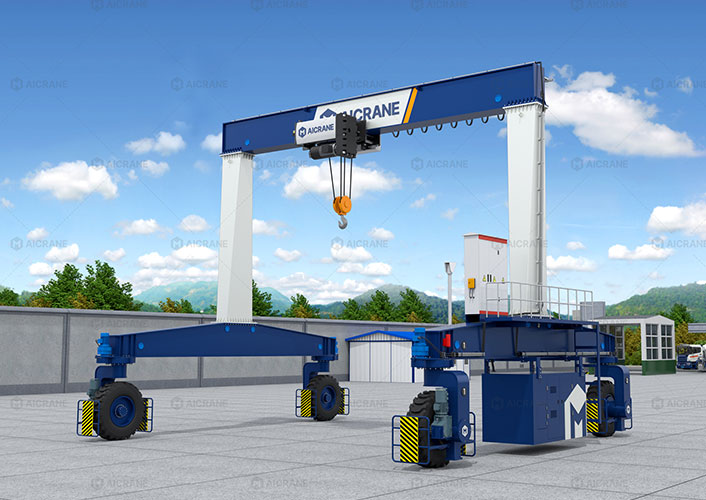When considering the purchase of a Rubber Tyred Gantry (RTG) crane, one of the most critical aspects to understand is the pricing. RTG cranes represent a significant investment, and their price can vary greatly depending on several technical, operational, and logistical factors. To make an informed purchasing decision, it is essential to ask your supplier the right questions. This article explores key questions that buyers should ask to better understand RTG crane pricing and ensure transparency throughout the procurement process.

1. What Is the Crane’s Lifting Capacity and Span?
One of the primary factors that affects the rubber tyred gantry crane price is its lifting capacity and span. The more the crane is required to lift or the farther it needs to span, the more robust the design, materials, and power systems must be.
Questions to ask:
-
What lifting capacity is recommended for my specific operation?
-
How does increasing the span affect the cost?
-
Are custom spans or lifting capacities possible, and how do they impact pricing?
Why it matters:
A crane that’s over-specified will cost more than necessary, while an under-specified crane can lead to operational inefficiencies or safety risks.
2. What Type of Power System Is Used?
Rubber tyred gantry cranes can be diesel-powered, electric-powered, or hybrid. The power system affects not only the operational cost but also the upfront price of the equipment.
Questions to ask:
-
Is the RTG gantry crane diesel-powered, electric, or hybrid?
-
What are the long-term fuel or energy savings of each option?
-
Does an electric RTG require additional infrastructure, and how much will that cost?
Why it matters:
Electric and hybrid systems may cost more initially but can offer savings over time due to lower fuel costs and reduced emissions.

3. What Is Included in the Standard Quotation?
Not all suppliers include the same components in their base price. Some may offer a lower quote that excludes key features or services.
Questions to ask:
-
Does the quote include delivery, installation, and commissioning?
-
Are operator cabins, remote controls, and anti-sway systems included?
-
What other accessories or attachments are part of the base price?
Why it matters:
Understanding what is included prevents surprise charges later in the process.
4. What Are the Customization Options and Their Costs?
Depending on your operation, you may need customization in terms of span, height, steering modes, or control systems.
Questions to ask:
-
What aspects of the RTG crane can be customized?
-
How do these customizations affect the cost?
-
Are there pre-engineered modules that reduce the cost of customization?
Why it matters:
Customization is often necessary but should be balanced with cost-effective engineering to avoid overspending.
5. What Is the Work Duty Rating of the Crane?
The work duty or duty cycle (e.g., A5, A6, A7) indicates how intensively the crane is designed to operate. Higher duty ratings typically require stronger structural components and more durable systems.
Questions to ask:
-
What duty class is suitable for my application?
-
Can I choose between standard and heavy-duty models?
-
How does work duty affect the gantry crane price?
Why it matters:
Choosing a higher-duty RTG crane than needed may inflate costs without delivering real operational benefit.

6. What Are the Maintenance and Spare Part Costs?
An often-overlooked aspect of crane pricing is the total cost of ownership, which includes maintenance and spare parts.
Questions to ask:
-
What is the expected frequency and cost of routine maintenance?
-
Are spare parts readily available and affordable?
-
Can your team train my staff in maintenance procedures?
Why it matters:
Some low-cost cranes may have expensive or hard-to-source parts, leading to higher long-term costs.
7. What Is the Lead Time for Delivery and Installation?
Lead time can affect your project timeline and overall budget, especially if the crane is needed urgently.
Questions to ask:
-
How long does it take to manufacture and ship the crane?
-
Is installation support provided?
-
Are there expedited manufacturing or shipping options, and what do they cost?
Why it matters:
Delays in crane availability can halt operations, and rush orders may increase the price significantly.
8. What Are the Crane’s Safety Features?
Safety features such as overload protection, anti-collision systems, and emergency stop functions are critical in any lifting operation.
Questions to ask:
-
What safety features are standard?
-
Can additional safety features be added?
-
How do safety systems impact the overall price?
Why it matters:
Compromising on safety to save costs can be extremely risky and may violate local regulations.
9. Are Training and After-Sales Services Included?
Reliable after-sales service and training can reduce downtime and ensure your staff can operate the crane efficiently.
Questions to ask:
-
Does your company provide operator training?
-
Is after-sales service included in the crane price?
-
What is your warranty period and scope?
Why it matters:
A supplier with strong after-sales support ensures long-term crane performance and reduces unexpected costs.
10. What Certifications and Standards Does the Crane Meet?
Compliance with international or local standards often adds to the manufacturing cost but ensures safety and reliability.
Questions to ask:
-
Is the RTG mobile gantry crane certified to ISO, FEM, or other industry standards?
-
Does it comply with local regulatory requirements?
-
Are certifications included in the quoted price?
Why it matters:
Non-compliance can lead to legal problems, fines, or even forced shutdown of operations.
11. Can You Provide Case Studies or Customer References?
A trustworthy supplier should be able to offer references and examples of successful projects.
Questions to ask:
-
Can you provide client references or case studies similar to my application?
-
What were the costs and outcomes in those projects?
-
Can I visit a site where your RTG crane is in operation?
Why it matters:
Understanding how similar projects were priced and performed can validate your supplier and help you benchmark pricing.
12. Are There Financing or Leasing Options?
Some suppliers offer financial solutions to help ease the burden of a large capital expenditure.
Questions to ask:
-
Do you offer financing or leasing plans?
-
What are the terms and interest rates?
-
Are there tax or depreciation benefits available with certain plans?
Why it matters:
Flexible financing could enable you to invest in a higher-quality crane without upfront cash strain.
Conclusion
Rubber tyred gantry cranes are indispensable assets in container terminals, logistics centers, and industrial facilities, offering high mobility and lifting flexibility. However, the cost of an RTG crane can be influenced by a wide range of technical and service-related factors. By asking the right questions – ranging from crane specifications to after-sales support – you can ensure that you’re not only getting the best price but also the best value.
A transparent and well-informed conversation with your supplier will help you avoid hidden costs, select the right configuration, and secure a solution that meets both your operational and financial needs.